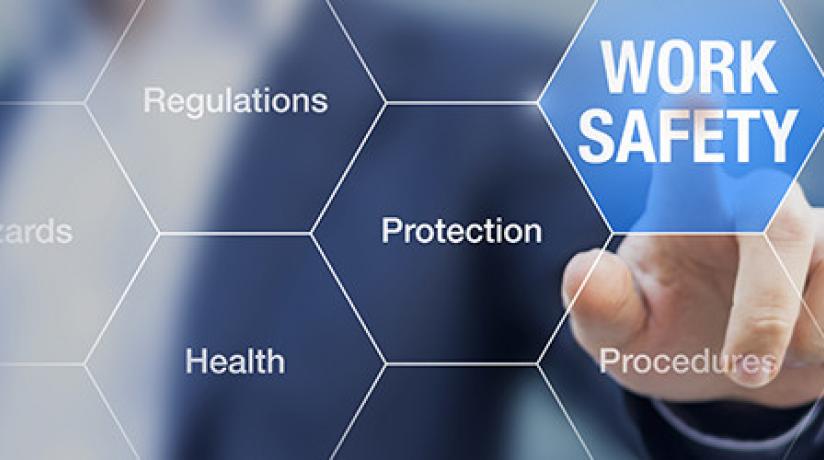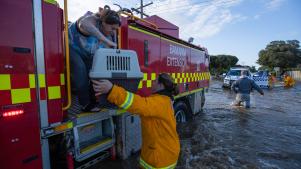The Occupational Health and Safety Regulations 2017 will commence on 18 June 2017.
The new regulations will replace the Occupational Health and Safety Regulations 2007.
Drafting of the new regulations by WorkSafe involved an extensive consultation process with employer association and union representatives, and the regulations have also been through an extensive public consultation process.There are many changes in the regulations that have simply streamlined the regulations to make them more readable and workable.
The new regulations and a detailed summary of the changes can be found here.
Key changes in the regulations that Master Builders members will need to be particularly aware of are as follows:
Noise
If the results of two or more audiometric tests of an employee during a period not exceeding two years indicate a reduction in hearing levels equal to or greater than 15 decibels at 3000 hertz, 4000 hertz or 6000 hertz, the employer must provide for the employee to undergo an audiological examination as soon as reasonably possible.
Plant registration
The requirement to register designs for the foundations and supporting structure and crane ties of a tower crane has been removed from the regulations. There is still a requirement to register the design of the tower crane with WorkSafe prior to its use.
The designs for lifts that are designed to lift goods alone (e.g. service lifts, dumbwaiters) no longer need to be registered with WorkSafe.
High-risk work licenses
Dogging – the definition of dogging work has been redrafted and means one or both of the following—
(a) the application of slinging techniques, including the selection or inspection of lifting gear, to sling a load;
(b) the directing of a crane or hoist operator in the movement of a load when the load is out of the operator’s view;
Licenses will no longer be required for operators of low-lift pallet trucks.
The scope of work allowed under a bridge and gantry crane operation licence has been broadened. The regulations provide that the scope of the work for a bridge and gantry crane operation licence includes the application of load estimation and slinging techniques to move a load with a bridge crane or gantry crane. Previously, this work could only be performed by a person holding a dogging licence.
Hazardous substances
The regulations have been aligned with the Globally Harmonised System of Classification and Labelling of Chemicals (GHS).
Asbestos
The OHS regulations 2007 only apply to a workplace where there is fixed and installed asbestos present. In recognition that there could be instances where there may be no fixed or installed asbestos present at the workplace, but there may be other forms of asbestos such as asbestos-contaminated soil or asbestos-contaminated dust present, the new regulations will require all asbestos to be identified and asbestos audit reports to be produced. This will ensure that all asbestos in the workplace is identified and the associated risks are appropriately managed.
The content of the current Dangerous Goods Order 2007 has been incorporated into the OHS Regulations 2017. This means that the regulations have been extended to regulate the removal of asbestos that is not fixed or installed, including asbestos-contaminated dust.
Division 7 of the asbestos regulations requires duty holders to inform others that asbestos removal work will be undertaken. These duties apply to both licensed and non-licensed removal. The OHS Regulations 2007 created the appearance that in relation to licensed removal, employers who have been informed are not required to notify their employees. Therefore, a requirement for licensed removal work that employers who have been informed of asbestos removal should inform their employees in immediate and adjacent areas has been introduced to the OHS Regulations 2017.
Class B removalists are currently restricted under the Dangerous Goods Order 2007 (DG Order) from removing non-friable asbestos that is not fixed or installed, despite being able to remove unlimited amounts of fixed or installed non-friable asbestos. By incorporating the DG Order into the OHS Regulations 2017, and given that the same method of removal and risk control would be used for non-friable asbestos that is not fixed or installed, the Class B asbestos removal licence holders are now able to remove all non-friable asbestos under the OHS Regulations regardless of whether the asbestos is fixed or installed, or not fixed or installed.
In relation to the removal of asbestos-contaminated dust (ACD) not associated with the removal of non-friable asbestos, the requirements outlined in the DG Order have been included.
This allows Class B removal of ACD:
– If the removal of ACD does not exceed 10 minutes in total, and in a cumulative sense does not exceed one hour in seven days, or
– Where an independent person determines that airborne asbestos fibre levels are likely to be less than one half of the asbestos exposure standard
A Class A licence holder will now be allowed to engage an independent contractor who operates an excavator provided the independent contractor is supervised by the licence holder and the asbestos removal supervisor.
The change will enable Class A licence holders to access excavator operator services where necessary from time to time to undertake asbestos removal work. The regulation protects health and safety by ensuring that the independent contractor is appropriately supervised.
Construction
The primary obligations for OHS Coordination Plans (applicable for projects greater than $350k), SWMS, Construction Induction Training and Site Specific Training remain unchanged.
One slight, but particularly notable, change to the regulations is that SWMS must be set out and expressed in a way that is readily accessible and comprehensible to the persons who use it.
Under the new regulations employers will be required to develop emergency procedures if there is a risk of a person becoming engulfed by soil or other material when construction work is being performed.
This new duty will in particular affect building projects involving trenching works (e.g. sewer or drainage work) and work involving excavation of basements and carparks.
Codes or practice released for public comment
Eight proposed compliance codes will be available for public review and comment from Monday, 1 May 2017.
The proposed codes include:
• Proposed Hazardous Manual Handling Compliance Code
• Proposed Hazardous Substances Compliance Code
• Proposed Plant Compliance Code
• Proposed Confined Spaces Compliance Code
• Proposed Demolition Compliance Code
• Proposed Excavation Compliance Code
• Proposed Facilities in Construction Compliance Code
• Proposed Noise Compliance Code.
Members can make comments and submissions in response to the proposed codes. Comments will be received by WorkSafe until no later than close of business on Friday, 9 June 2017.
A dedicated website has been set up to accept submissions online at consultation.worksafe.vic.gov.au (live from Monday 1 May 2017). Submissions may be lodged electronically using the online form, by email or post.
All submissions will be treated as public documents and will appear online unless clearly identified as being confidential.
A separate public comment period is expected late in 2017 for an additional four proposed compliance codes.
• Managing Asbestos in the Workplace Compliance Code
• Removing Asbestos in the Workplace Compliance Code
• Prevention of Falls in Housing Construction Compliance Code
• Prevention of Falls in general Construction Compliance Code
Master Builders will make a submission on the proposed codes before 9 June 2017 and will make members aware of the release of the asbestos and falls codes when they are released later this year.





